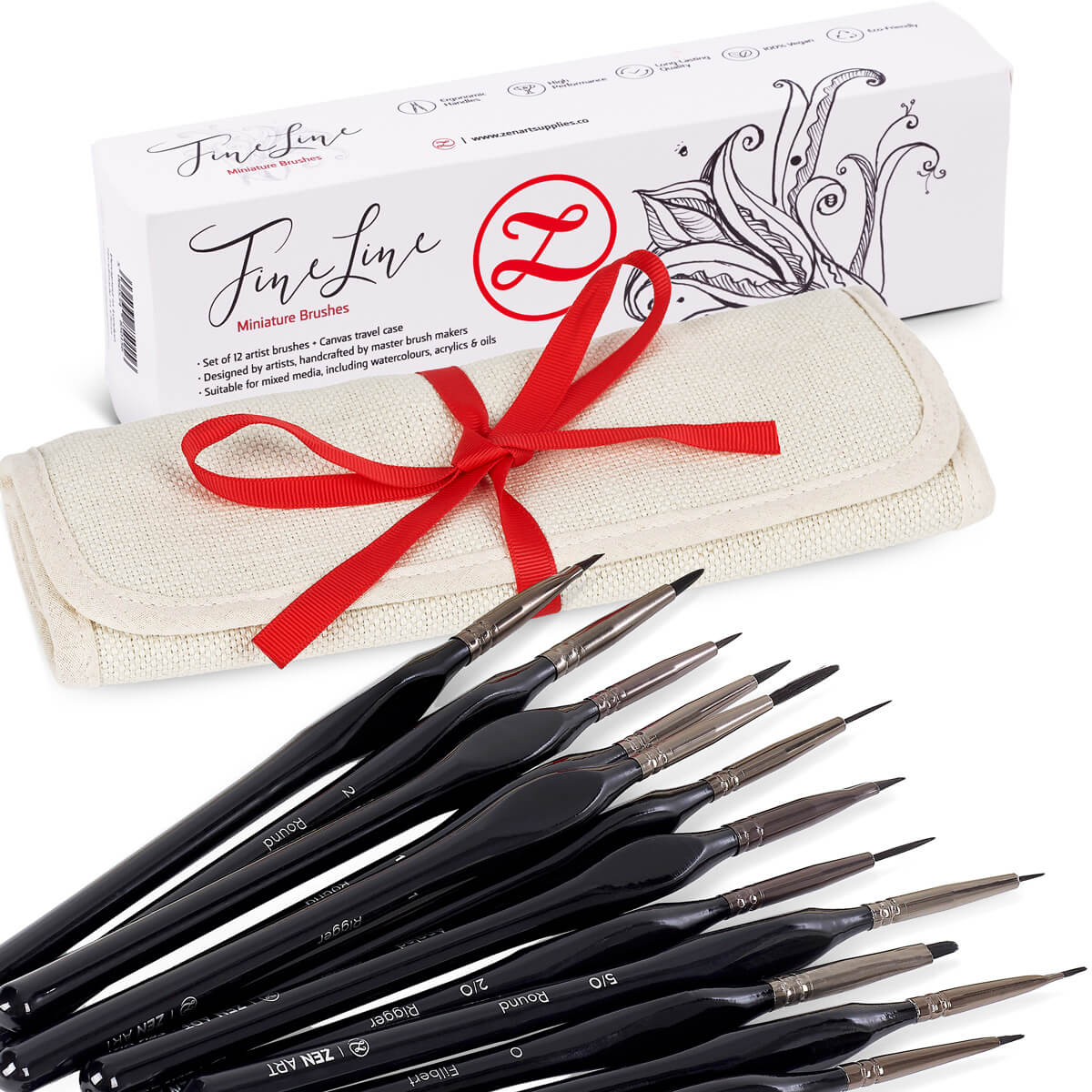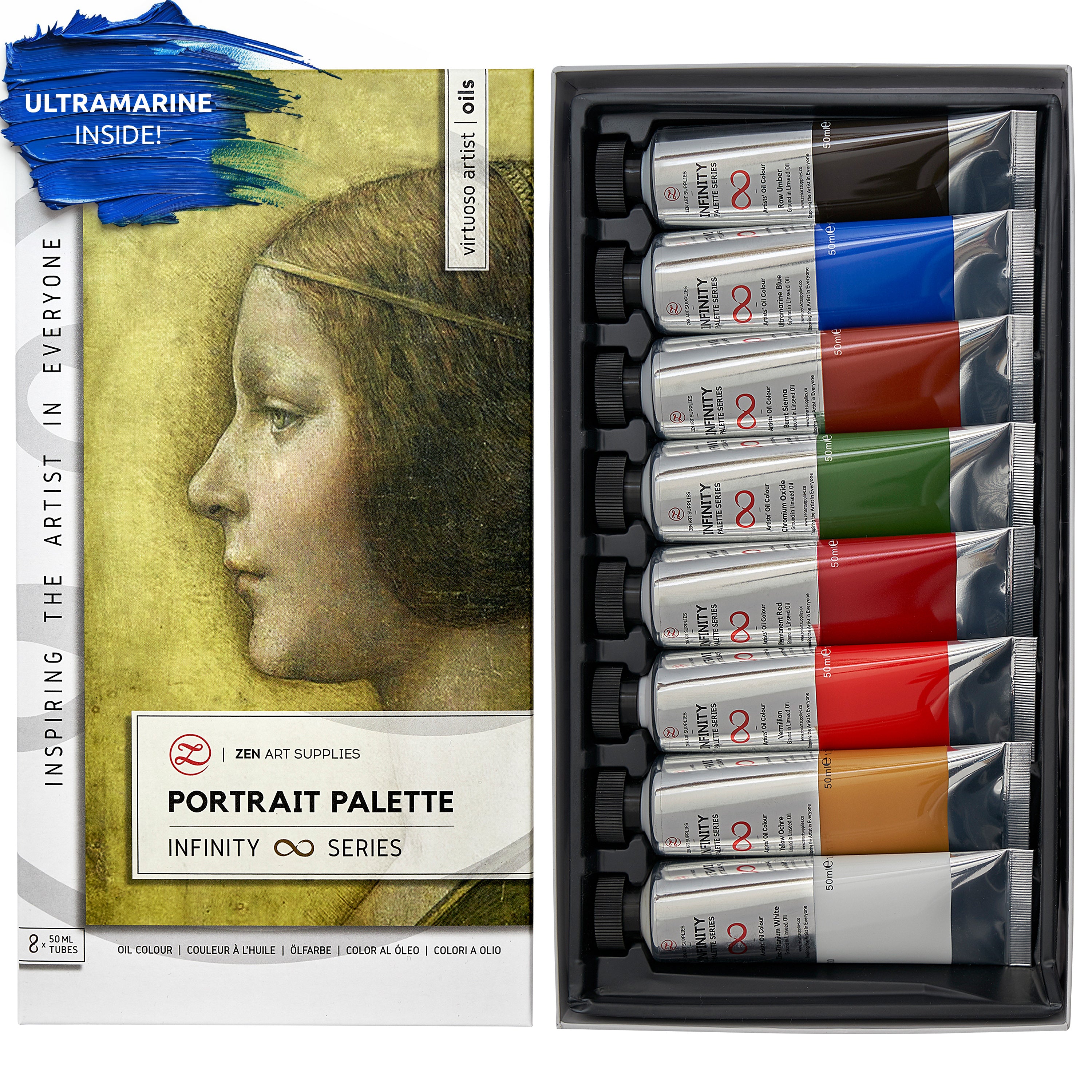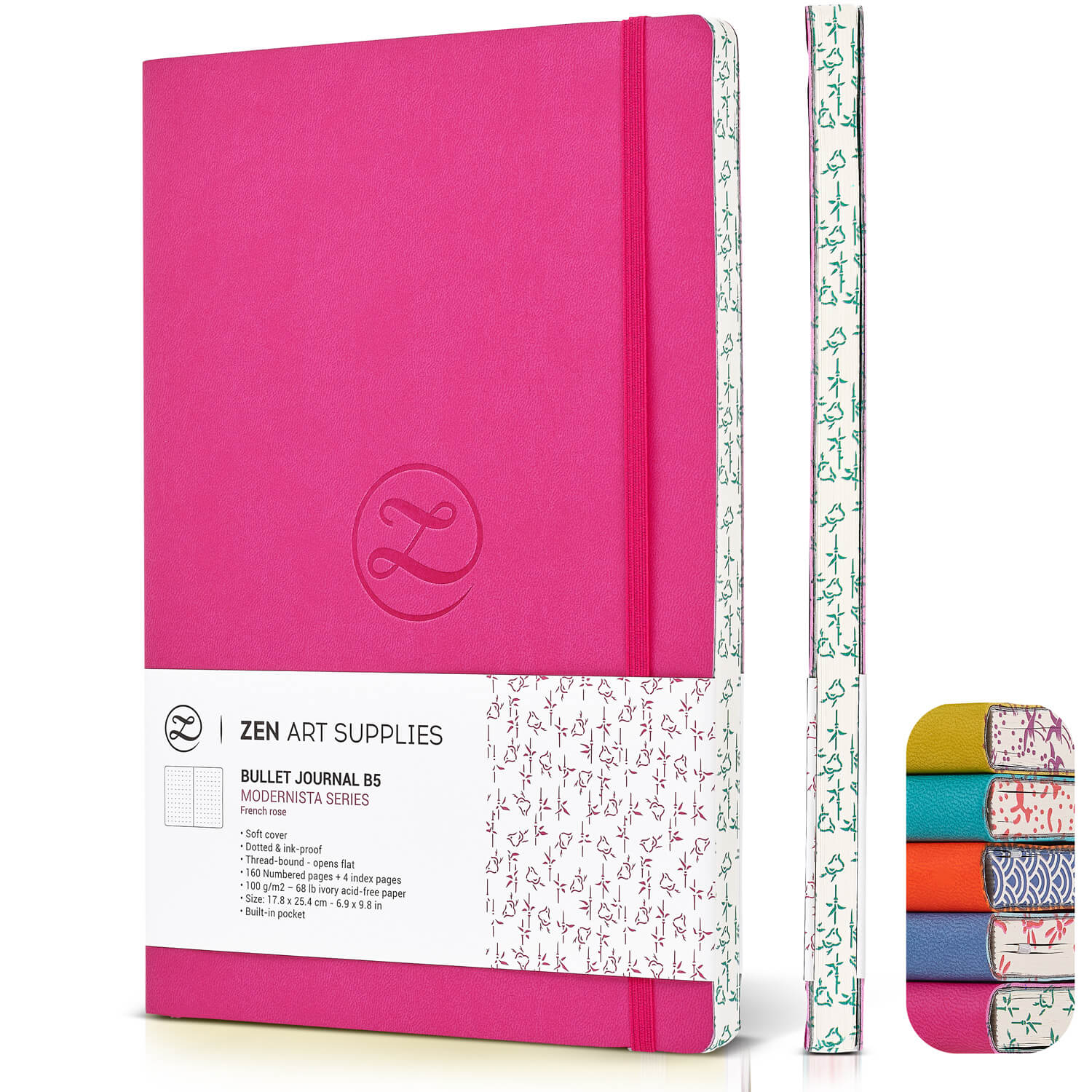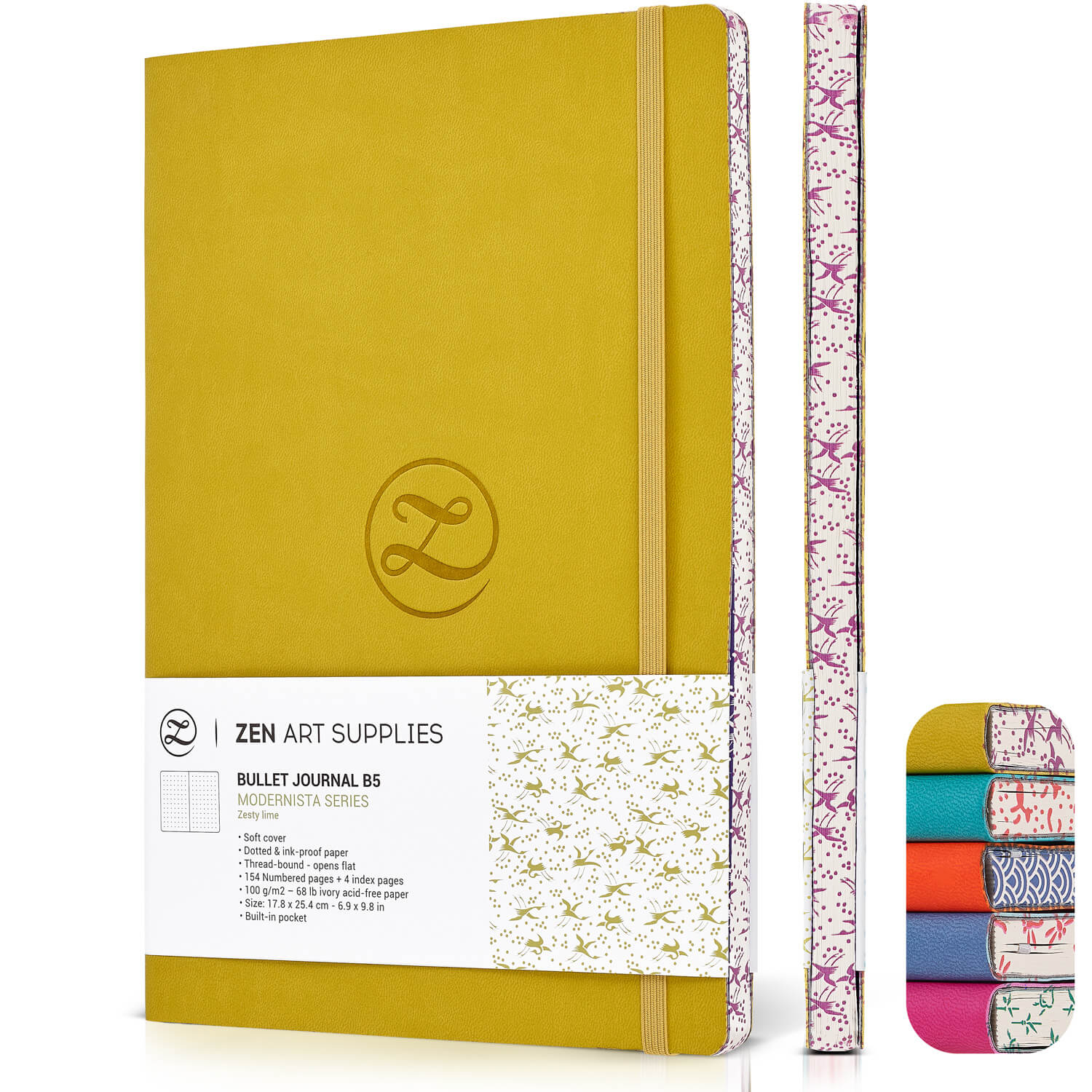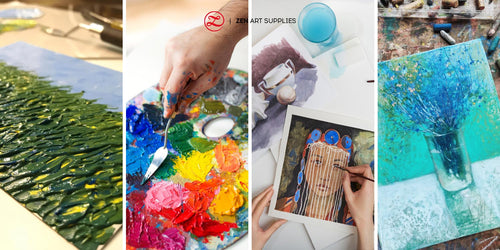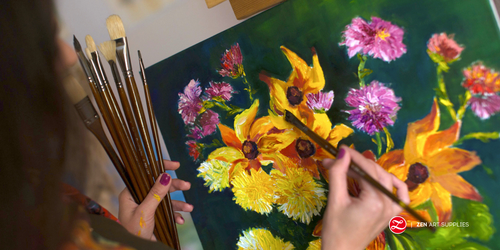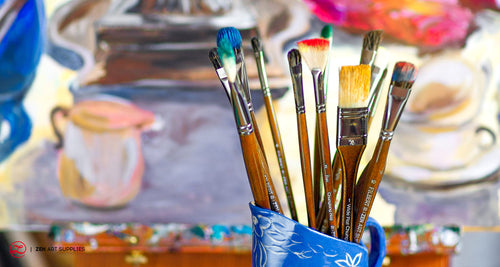I don’t think anything compares to the joy and fun of painting. More so with acrylic paints.
But what if you have too much fun while painting? Trusting the process can get a bit too messy at times, even for an artist’s standards. We know how stressful cleaning up after art-making can get, especially when there’s paint everywhere that won’t come off easily.
That’s why we’ve made this guide to getting acrylic paint off just about every surface. Trust us, it can and will be washed off.
But first, what is acrylic paint and why is it so permanent?

Creatives love acrylic paint for its versatility and it dries in minutes. When acrylic paint dries, it dries almost permanently. Which is both a charm and a disadvantage.
To get a bit technical, acrylic paint is water-based and composed of pigments that are suspended in an acrylic polymer emulsion. It’s water-soluble in its liquid state and dries by evaporation. The water keeps the polymers dispersed in the paint’s fluid form. But when it evaporates, the acrylic polymer particles interact and form a film or coat on the painted surface. The pigments are essentially trapped on the surface unless otherwise activated by a solvent.
Unless you prep for longevity, nothing truly lasts forever, not even acrylic paint. Over time, exposure to the elements can wear and tear at the layers of paint you’ve worked so hard on.
But say you need to wash it off stat, don’t worry there’s a solution for everything!
So…can acrylic paint be washed off?
Yes—and it’s easiest done while the paint is still wet.
If you’re dealing with paint that’s been dry for a while, however, it won’t be that easy. Your paint removal method depends on both the surface and the dryness of the acrylic paint.
So if you think you’ve ruined your artwork—or worse, your furniture—don’t lose hope. All you need are the right substances and materials, which you probably already have at home. And maybe a bit of elbow grease.
Here are your new best friends when it comes to cleaning up acrylic paint. We’ll walk you through how to use them, too, and on which surfaces.
- Warm, soapy water (use dish soap or hand soap)
- Rubbing alcohol or denatured alcohol
- Wet wipes and bleach wipes
- A rag or spare dishcloth (for god-mode cleaning: use a microfiber cleaning cloth)
- Cotton buds and cotton balls
- A squeegee or putty knife
- Sandpaper when all else fails
Is acrylic paint washable on skin? How about fur?
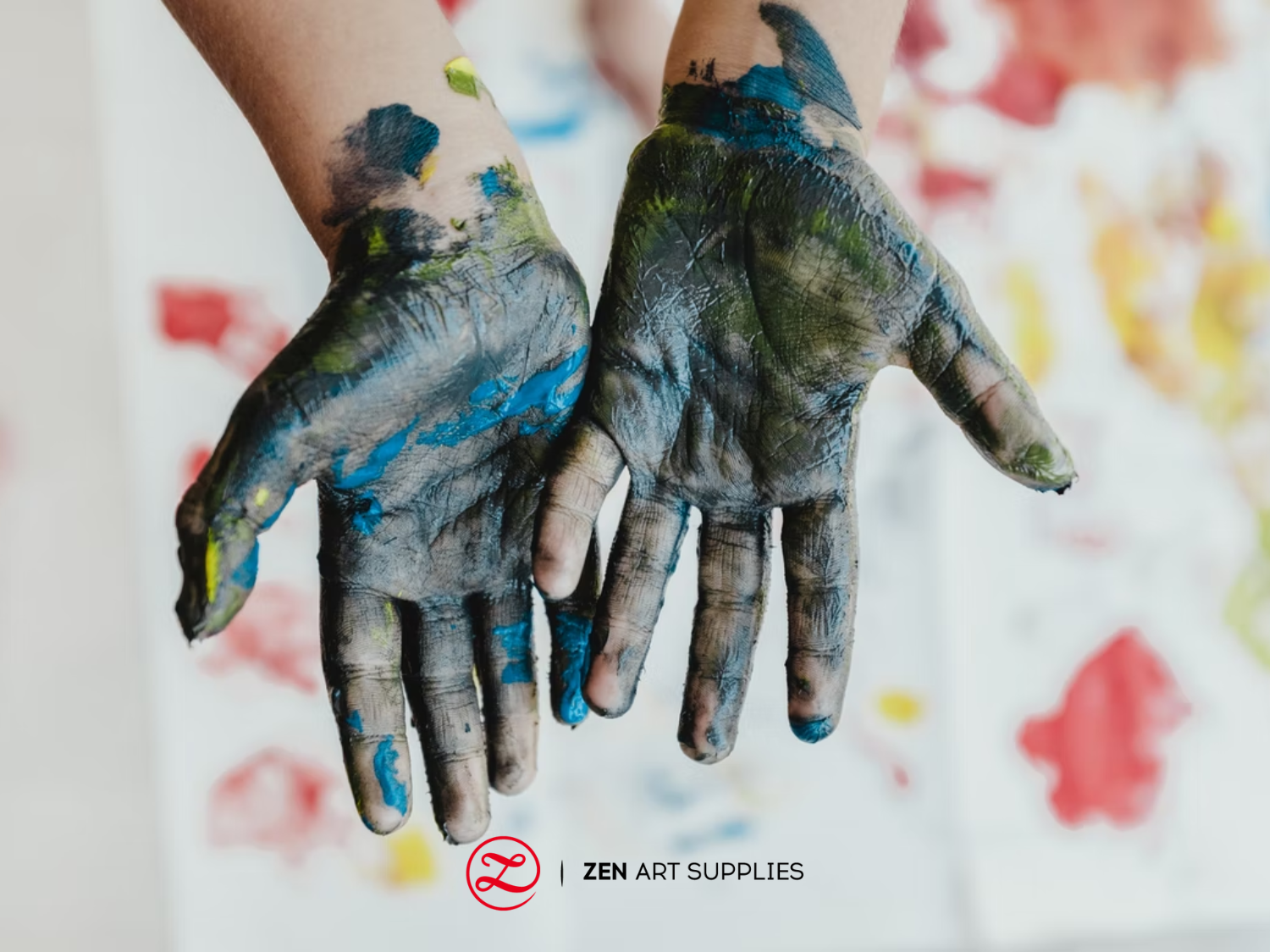
Short answer: Yes.
When you’re painting, you really can’t help but get it on your person. Lefties know the struggle most. Paint can get all over our hands and arms. I’ve even gotten acrylic paint on my legs and feet before—don’t ask.
Luckily, paint only temporarily stains the skin. So if you’re with kids and using acrylic paint, you’ll be fine. Though, finger painting is all fun and games until someone thinks they can eat the color yellow. Supervision is key!
Now, if paint gets on your skin, a warm wash with soap will do the trick. In a pinch, you can also use some rubbing alcohol or hand sanitizer. If you’re dealing with sensitive skin, warm water and a hypoallergenic soap or a gentle wipe of baby oil work too.
This is all fine and dandy if we’re dealing with human skin.
So what if your pet’s gotten itself into a sticky situation?
In the first place, maybe avoid painting with a pet roaming around. But if it can’t be helped—like in my case, I live in a studio apartment—always be vigilant.
Acrylic paint can be toxic to your furry friends! Especially if ingested. It can also dry and cake on their fur or in between their paw pads.
I live with a clingy cat who loves following me around, to the point that he’s fallen asleep on the very table I’m working on. Suffice to say, my furry little demon has gotten his tiny paws in my paint palettes before. This is why I have pet-friendly wet wipes at the ready. And treats to keep him away from my painting.
But if your pet decides to turn itself into a work of art to the point of no return, head to the bath ASAP. Your artwork can wait, but your pet may not. A quick bath with warm water and shampoo and a serious conversation about personal space should do the trick.
Is acrylic paint washable on clothes?

When painting, it’s about embracing the mess and letting creativity flow from there. But when acrylic paint gets on your clothes, it can get stressful thinking your garments are soiled for good. Many times, I’ve noticed a dried-up paint stain on my shirt way after I’m done working. But I don’t fret.
Acrylic paint, especially those with a washable formula, will come off easily in the wash. Though a detergent pen, wet wipes, or an instant stain remover are also good alternatives if you’re on the go. For foolproof paint stain removal, handwash your clothing first with warm water and detergent before sending it to the laundry bin. To prevent your clothes from staining, discoloring, or disintegrating, be gentle and don’t use a paint solvent.
For prevention, I can’t recommend an apron enough. It also gets you in the mood to create and work. much like how businessmen wear suits to the office, so too do artists don their art aprons!
Is acrylic paint washable on fabric?
Now, how about upholstery? Or carpets?
For a quick fix, dip a cotton bud or cotton ball in some alcohol or hand sanitizer. Dab—don’t rub!—til the paint lifts and disappears. Granted, these furniture fixes work so long as the paint hasn’t been dry for hours.
Make sure to use color-safe detergent or gentle soap to avoid damaging your fabrics. Vinegar is also another cost-effective and gentle solution.
To prevent further mishaps, avoid painting near couches and cushions, or on top of carpets. If unavoidable, cover vulnerable surfaces!
How do you get acrylic paint off wood?

Many artists paint and work on wooden desks. You may already feel the frustration of seeing a paint stain on your workstation. Wood can be particularly tough to clean because it’s grainy and porous—acrylic paint easily absorbs and clings to those crevices in the wooden grain.
If you work on a desk made of finished wood, you’ll have an easier time wiping or scrubbing off paint.
By now, you’ll know that the best way to wash off acrylic paint is when it’s still wet. If this is the case with your wooden surface, grab a dishcloth and some soapy water and quickly get to work. Now if the paint’s dry, see if you can still soften it with the said soapy solution before scraping or wiping off. If this doesn’t work, try gently going at it with some rubbing alcohol.
Now if your paint stain is deeply lodged in the grain of the wood, you’ll need a stronger solution. You may opt to let the soap lather on the wood while repeatedly rubbing at it. A 15-minute soak in a few drops of olive oil may also soften the paint for easier scraping.
With wood, be extremely gentle to avoid scratching or damaging the finish or varnish.
If all else fails, you may need to use sandpaper. If you have one, a heat gun can also melt the paint so you can lift or scrape it off.
Is acrylic paint washable on glass?

Absolutely. You’re better off scraping or peeling off the paint. Unless you’re using permanent acrylic paint specially formulated for industrial materials like glass, metal, or wood, you’ll be fine. Glass surfaces are some of the easiest to clean when paint gets on.
Glass isn’t porous nor is it grainy. So paint can’t absorb into it. Acrylic paint has a harder time sticking on glass permanently without a sealant. So even if the acrylic paint has been dry for days, you can get it off with minimal effort.
The best way to wash or wipe acrylic paint from glass is to use acetone or nail polish remover. The paint almost instantly dissolves so you can scrape it off with a razor, putty knife, or squeegee with no problem! You can also use the rough side of a dish sponge. Just soak it in water and dish soap. A few minutes of soaking the paint in alcohol can also help to loosen the paint from the glass for easy scrubbing or scraping.
The same method works on tiles, too. And that’s why I like using glass and porcelain when mixing acrylic paint.
Will acrylic paint wash off plastic and metal?

Similar to glass, plastic is fairly easy to clean. The same goes for metals. Some of the best paint mixing palettes are made of plastic or metal for this reason. It’s quite easy and satisfying to peel off acrylic paint from plastic or metal.
If you’re dealing with paint on your plastic or metal furniture, you’re not in trouble. Acrylic dries quite quickly yet doesn’t fully adhere to these surfaces. You can easily lift it off with a razor or paint scraper—or even just your fingers! When I’m bored, I sometimes use my nails to scratch dried acrylic paint off my palettes. Of course, some alcohol or acetone will do the job fast.
How do I get acrylic paint off my walls or floors?
Now if you’re pulling a Pollock and playing around with drip painting, use large trashbags to protect easily stained surfaces like walls and floors. Speaking from experience, my apartment looks like a poorly covered-up murder scene when I go into meditative p[ainting sessions with my fave tube of red paint. In some instances, a mopping solution just doesn’t cut it. So again, putty knife or scraper at the ready. Alternatively, some bleach wipes and elbow grease. You can also get a rough brush or washcloth and scrub with vigor.
But what if you have acrylic paint on your wallpaper? A cotton ball soaked in alcohol then applied and allowed to sit on the affected area will do.
How do you get acrylic paint off canvas?

Lastly, the surface you’ll likely work with most. A good ol’ artist’s canvas. Say you’ve made a grave mistake. Or you need to strip the canvas entirely and start over. It may come as a surprise, but getting acrylic paint off canvas is easier than you think.
If you’re correcting a small mistake and the paint is still wet, take a damp tissue and dab or wipe it off—just like using an eraser! And this method won’t lift the layer of paint beneath it so long as it’s fully dried. Now, what if you mess up your background or want to strip the paint entirely off your canvas? You’ll need a paint solvent like turpentine or mineral spirits. With these, proceed with caution and work in a well-ventilated area. Let the canvas soak in the solvents for at least 30 minutes. Once the paint dissolves, bring out your trusty paint scraper or putty knife. You may also use an old toothbrush to scrape the paint away. Repeat the soak-and-scrape process if necessary.
What other creative tips do you want us to cover?
We hope you’ve found these cleanup tips helpful. We’re all about letting go and letting the creativity flow. And we more than understand how tiring the cleanup process can be, especially after your creative energy has been so active.
Friendly reminder: Don’t skip cleaning up those brushes! We’ve got a guide just for you.
Now we’d love to hear from you! What other tips and tricks do you want to learn from us? Let us know in the comments below!
- MEET THE AUTHOR-

Belle O. Mapa is a writer and artist based in Manila, Philippines. She believes that everyone is born with an inner creative spirit—we just need to nurture and discover it on the blank page. Currently, she lives out her passion: writing stories, hosting journaling workshops, and advocating for mental health awareness.











